Studio Devona
Studio Devona - Music Gear
My Gear
On this page I cover pretty much all the gear I have used since the 1980's with the oldest at the bottom.
From humble beginnings I started off with a couple of affordable toy Casio keyboards and gradually worked my way through to my Korg Poly 800 analog synth with a drum machine and multi-track tape recorder. Over the years I added other synths, sold some, bought more and experimented with other gear.
Computers did not exist back then so everything had to be done on cassette or reel to reel tapes and mixing down was done by bouncing tracks from one part of the tape to the other which took ages and was risky because back then you could not just press undo. Midi was fairly new as well.
I now mainly use a Roland Fantom XR which covers pianos, orchestral sounds, woodwind and pads etc. I use my Roland JP8080's for some unique pad sounds which define a lot of my music. I have a Zoom effects unit for reverb which I like to use a lot to create more dreamy soundscapes. I use Reason software for programming drums and I use a Boss RC-505 Loop Station which helps to inspire me while playing. I use a couple of Rode NT1 mics to create stereo for meditations and I put everything through the Alto mixer. Most of the final editing is done through Audacity on the PC because I find audacity simpler to use at this time.
My Zoom H5 field recorder is nice for stereo nature sound recordings and I use a few accoustic instruments for other mellow sounds such as flutes, guitar, chimes, gongs, harp.
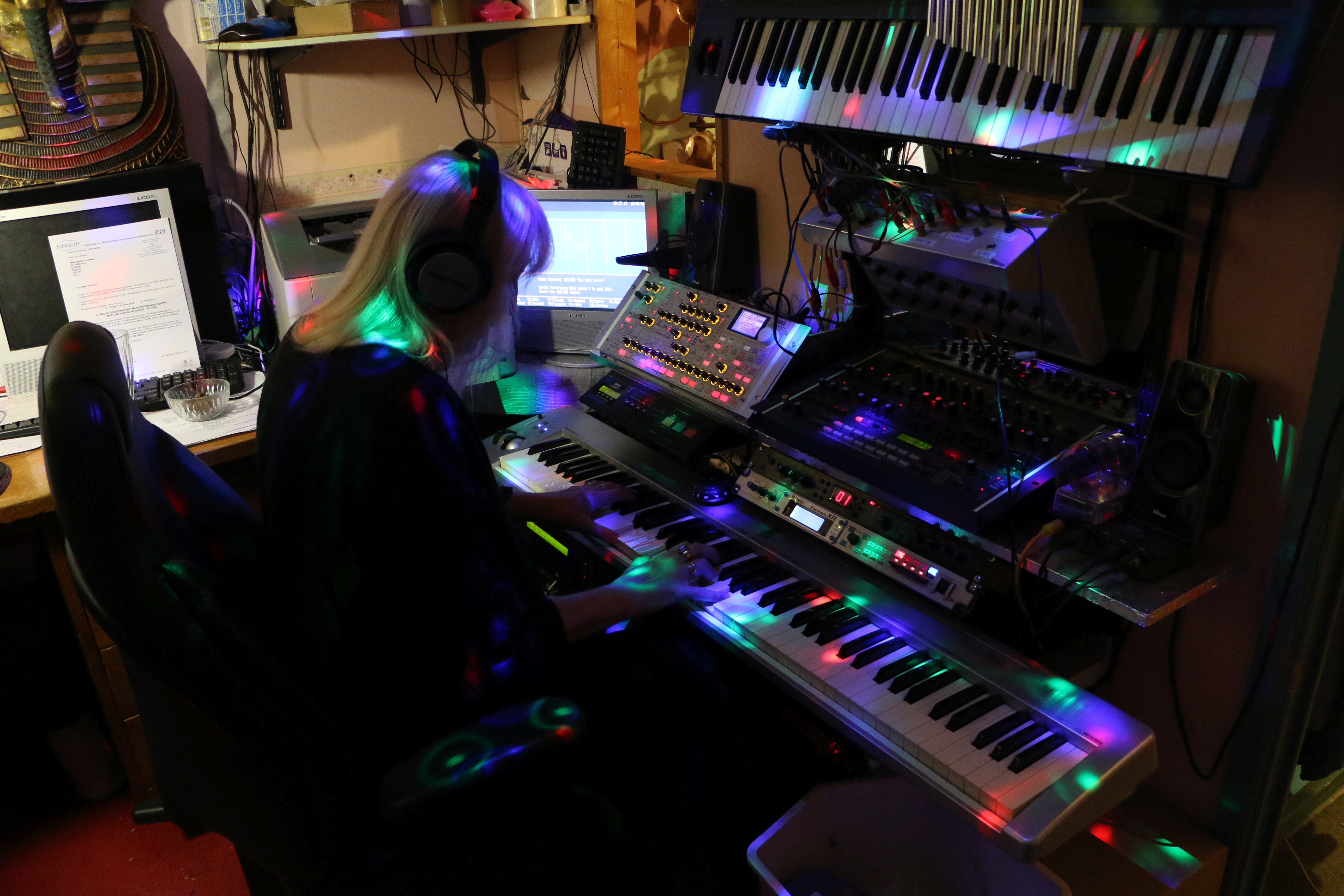

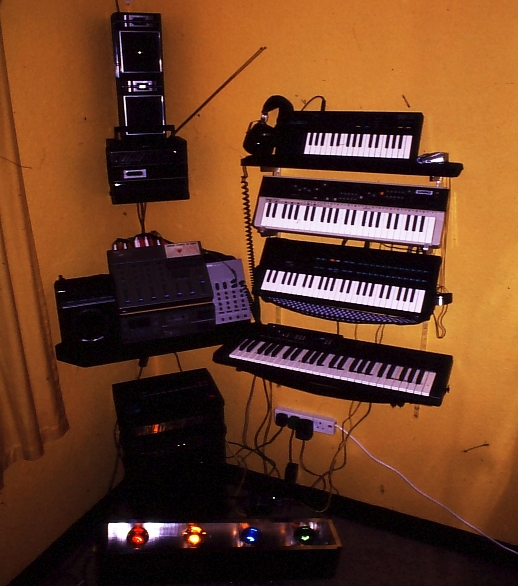
Korg Wavestate
I bought this second hand to try out in 2024 and am impressed with the sounds it produces. As I am particularly fond of unique pad sounds which evolve while you are playing them I hope to be using the Wavestate in a lot of my future chill out tracks.
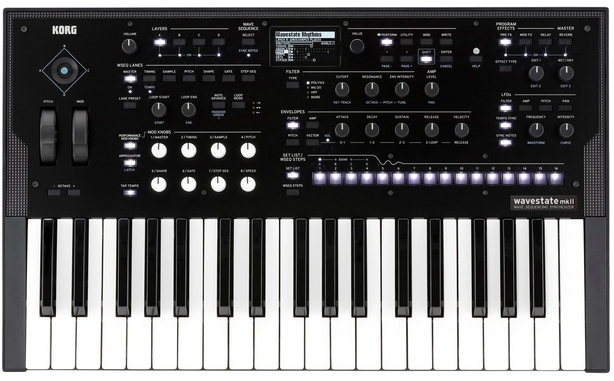
Purple Electric Guitar
After meeting Paul in 2024 I got to learn a lot more about electric guitars and decided I wanted to get more into playing. Originally he had a purple guitar which I liked the look of but he had sold it some time back so I began looking for a purple guitar and eventually one came along. We upgraded to fittings to gold colour and added my own designer decal too. Now all I have to do is carry on practising.
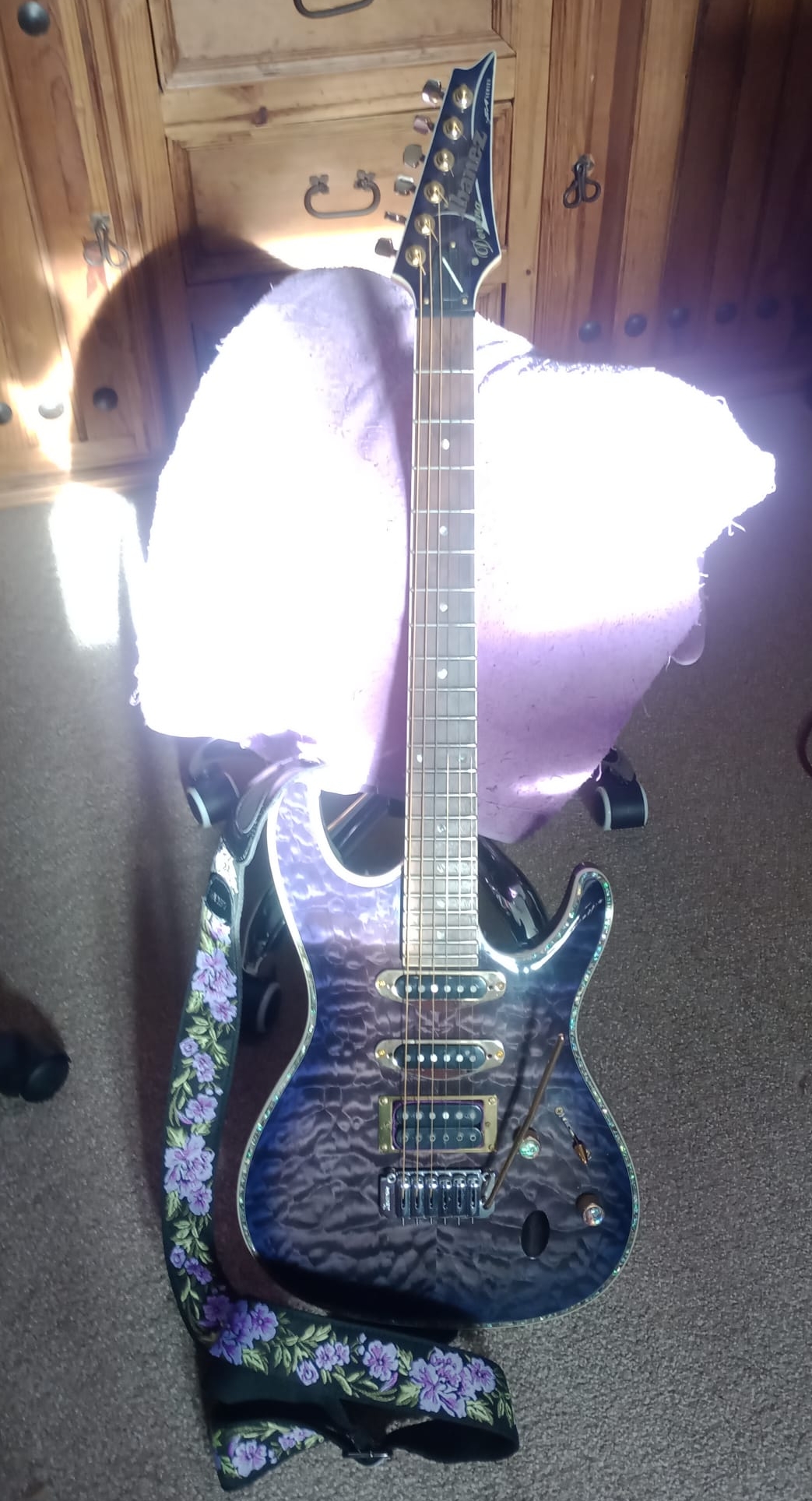
Alto Live 2404: 24-Channel Professional Mixer
In 2023 my old mixer finally started to konk out so a decision was made to upgrade to a proper studio mixer that I could plug all my gear into. I did a lot of research and settled for this one because of all the channels and the onboard effects which might be occasionally useful. The quality of the mixer is good and it was amazing to upgrade to something this modern where I can now adapt the settings of each channel and each instrument.
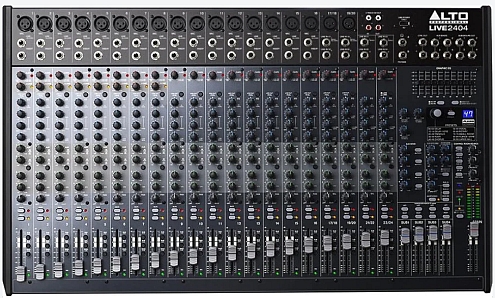
Accoustic Guitars
I had tried to learn accoustic guitar with my sister back in the 1970's but found it difficult on my hands and had ruled guitars out of my life. But when I recently got the three string stick dulcimer I soon picked it up and progressed to a 4 string guitar then a 5 string. It was because of the three string instrument that I was able to gradually advance so I am pleased about that.
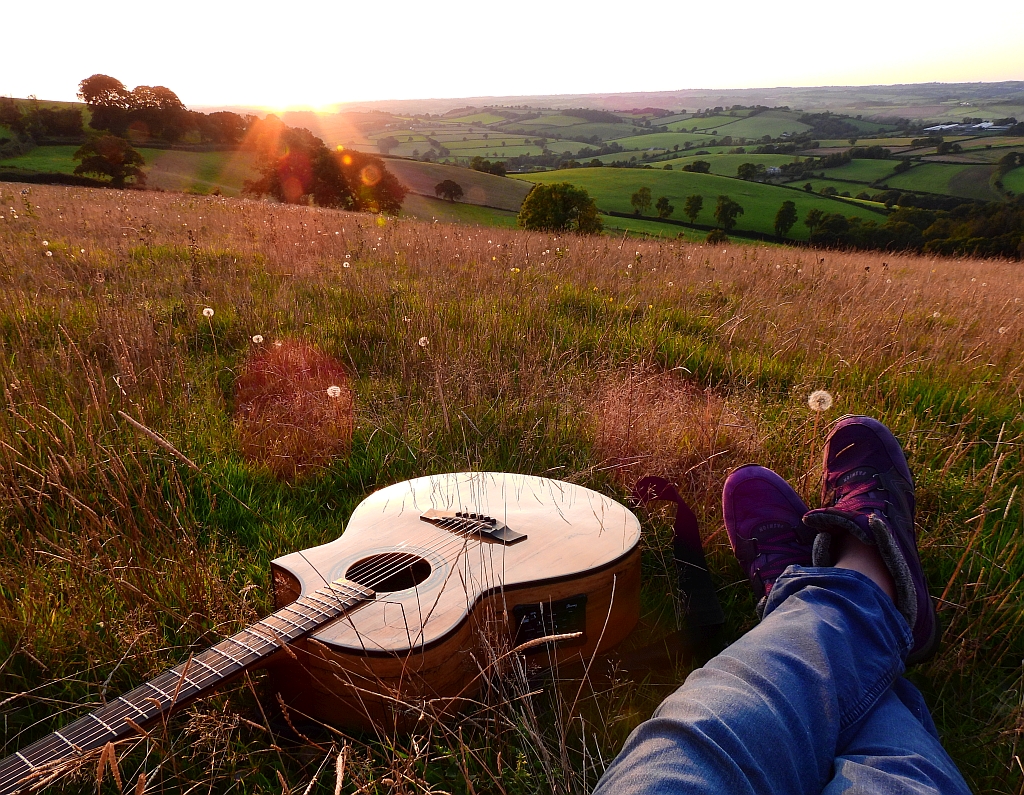
Saxaphone
When I was younger I never liked the sound of the saxaphone but it has grown on me over time and in 2022 I finally reached a stage where I wanted to try one. I did try a trumpet but did not manage that, however with the saxaphone I was surprised I was able to get sounds out of it right away and with practice I think I will get better. It is not likely I will use this in my music as I find the sax sounds on my Roland Fantom XR much easier to control and blend.
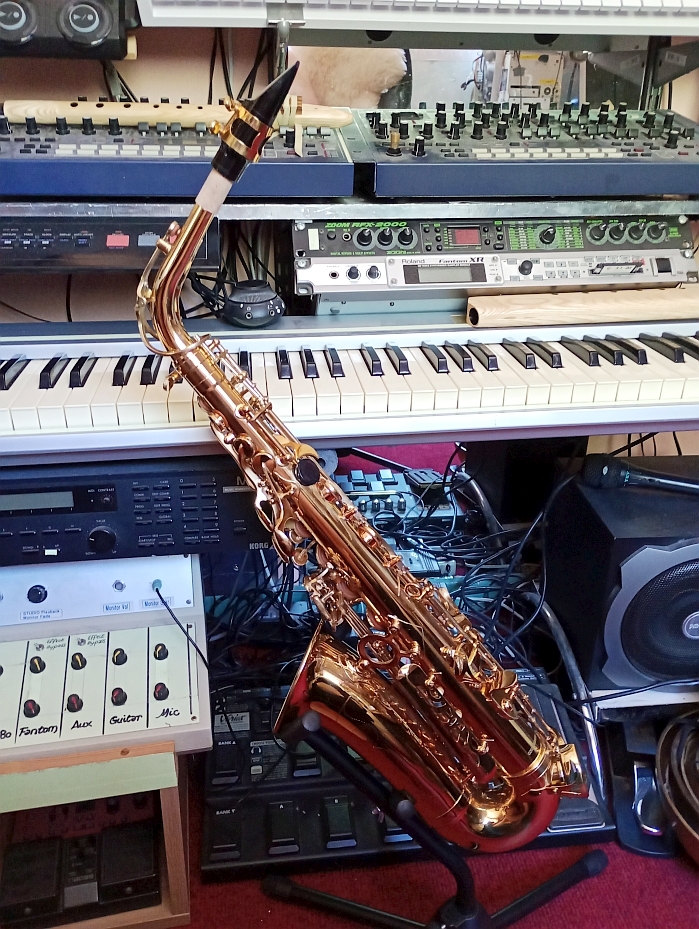
Flutes
Inspired by the sounds of Native American flutes in music I was listening to over the last decade I tried several cheap flutes including some Egyptian bamboo types and an Armenian Duduk. I also tried flutes from various craftspeople but finally found some that suited me nicely made by an e-bay seller Dave Gibson. He really crafted some lovely pieces that are light-weight and I got on with them right away. These are my favourite ones to take out and about now. He also was kind enough to give me some diagrams on flute making and I did make some of my own out of clay which work nicely though obviously they are delicate - they break if you drop them on hard ground.
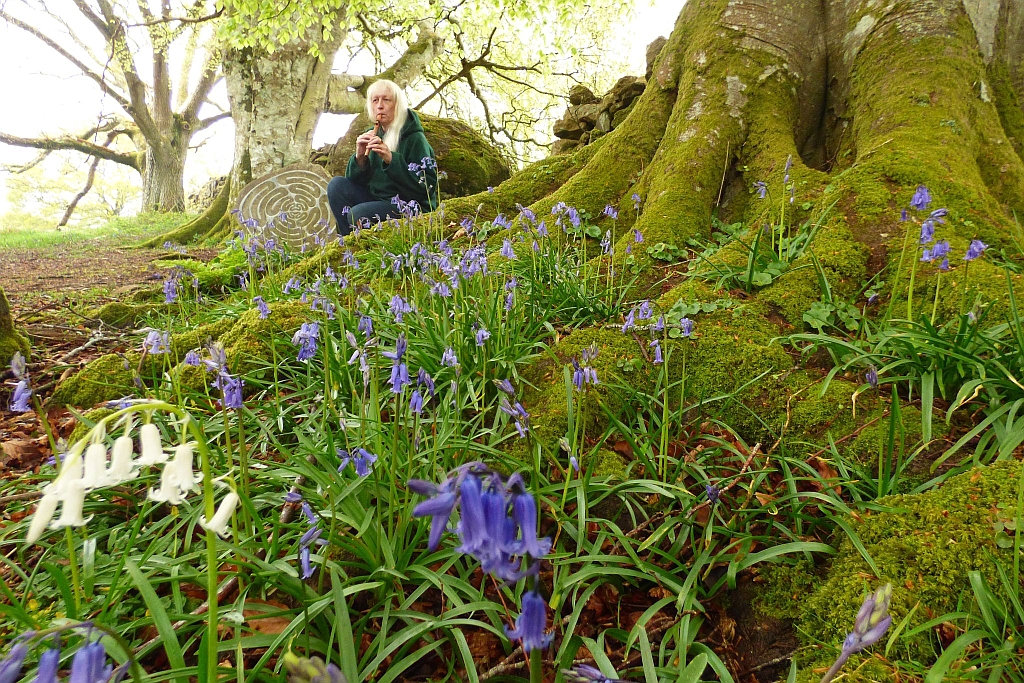
RC 505 Looper
2022. Following on from the first Boss looper I got I realized this was really helping my music so I invested in a new looper with more channels and have had no regrets. I might even link two of these together in the future. The RC 505 is easy to use and the 5 tracks is enough to get some good ideas recorded very fast. I can also upload the loops to my PC and edit them there later if I need to.
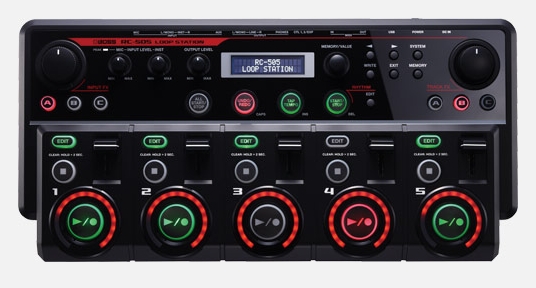
Zoom H5 Sound Recorder
I use one of these for good quality natural sounds recordings which I gather on my walks and explorations around Devon. I bought this one in 2021 for around £135. It has other microphone heads but the stereo directional head works fine for me. I use a wind shield over the mic a lot as just a slight draft will be picked up. All my sound meditation recordings have been done using this including wind, waves, waterfalls, streams, flames, birds, underground water drips.

Stick Dulcimer
Here is a great instrument for going out and about with - so simple and yet a really nice tone. The stick dulcimer I bought from Woodsmith Instruments for 130 pounds including the postage etc. Pete Smith makes batches of these now and then as well as hammered dulcimers too. The stick dulcimer has three metal strings and is tuned to the notes D, A, D. You can carry this anywhere when out for a walk it is so lightweight and unusual and easy to get some nice tunes from. Bought 2020.
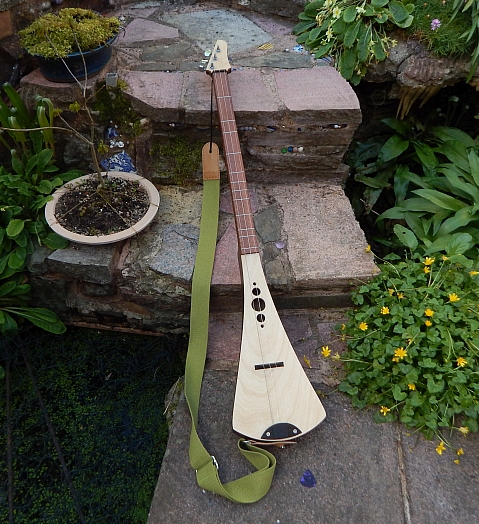
Cello & Violin
With the
covid 19 lockdown looming in 2019 I took the opportunity to get a
second-hand cello for 100 pounds.
I had never seen a cello in real life before nor touched one. Though I
did once have a violin that I gave away the
idea of having a go on a cello appealed. Again I knew this was not
something I would get the hang of in a hurry but
it was more a case of trying things out that I had never done before.
The cello bowing I found I could do nicely though
the cello kept going out of tune lots with pegs slipping and there were
problems with the old strings and a new one breaking. I eventually had to sell it because I needed the money and the space but I have no regrets in trying one out.
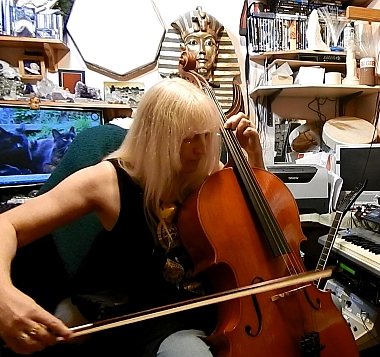
Line 6 POD XT Live.
For the electric guitar I also bought a second hand effects unit - Line 6 POD XT Live.
The effects unit is impressive giving some really nice high quality effects to the guitar that I wanted and I was able to download some patches from the www too which are fun to use.
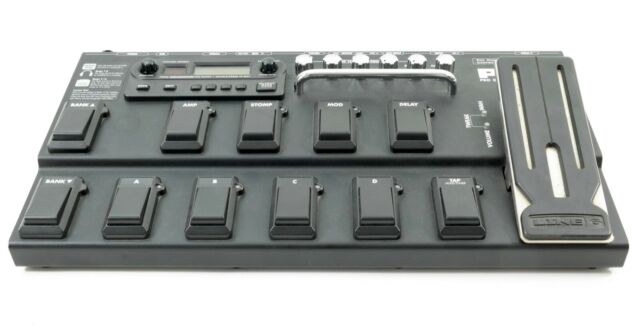
Electric and Bass Guitars
During 2019-2020 I decided to buy an electric guitar and bass guitar as I had always wanted to have a go.
I knew that these would not be instruments I would ever master but just having the chance to get to know them and
a few basic techniques was an appeal. I did find for some reason that learning guitars changed the way my brain responded to learning which actually also improved my piano playing!

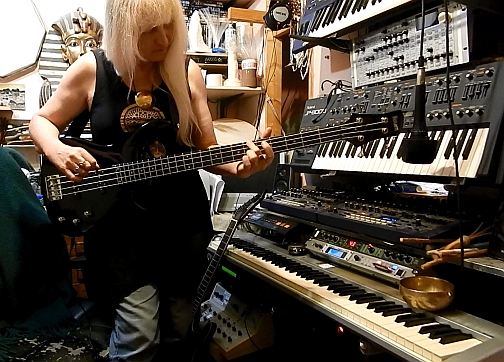
Harps and Gongs
Since 2016 when I purchased a harp the collection has grown to three sizes. The larger Iona harp is heavy and more used at home whereas the medium Irish harp is great for days out on the moorlands sitting by waterfalls or on the rock tors. The tiny lap harp is a bit limited but does have levers and its big advantage is I can take it on much longer walks! The gongs were a new purchase in 2019 after having attended a gong bath. I had always wanted to have a go so I visited a friend who has a number of them and decided to buy three basic pieces which have nice tones. The larger gongs can be exceedingly expensive so my journey into purchasing those is not obtainable but the large 32 inch gong I bought for 800 pounds is really nice sounding and I think there is no need to go bigger. It is amazing to stand in front of a large gong and gently play it and let the sounds pass through your body.
Since 2016 I sold the smaller harp because the plastic levers kept breaking, and got another gong and the large harp was passed on to my x.
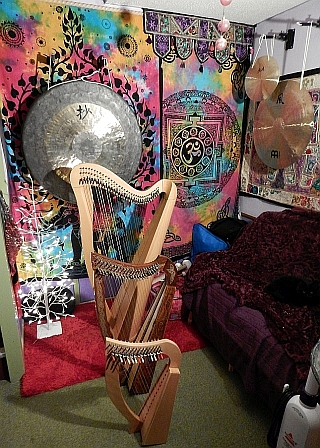
Arturia Keylab Essential 61 and Analogue Lab
In 2019 I discovered Arturia's free demo's of recreated old analogue synths which I found impressive. After a while I decided to purchase one of their MIDI controller keyboards which came with the analogue lab software and some free synth software as well. The software allows access to thousands of sounds from their complete range which is really good, also editing to a certain degree. Getting into fine details of each synth requires purchasing the instrument software which I did on one or two. I bought the Modular V3 and the Solina. The solina in particular replicates some of the great sounds that the pop stars Kim Wilde and Gary Numan used in their music. It was those sounds that attracted me to synths in the first place.
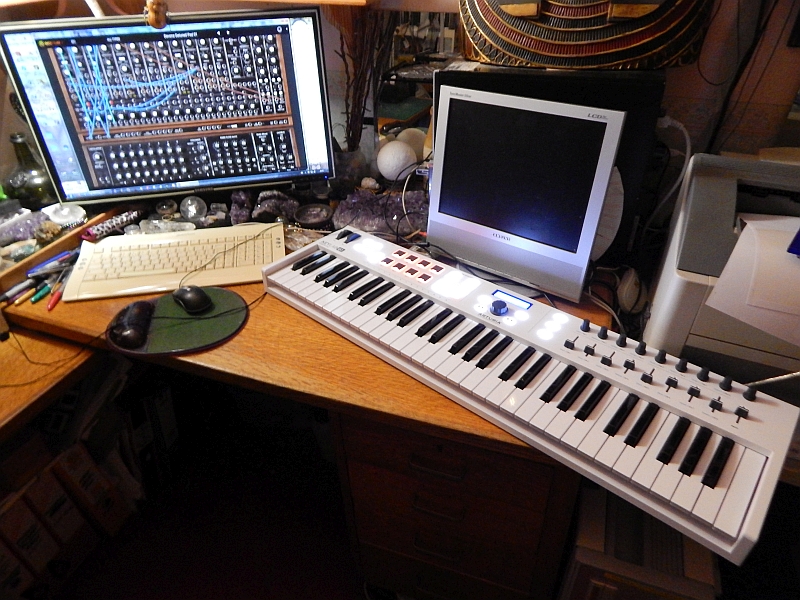
Lyre
I bought a Lyre in 2019 as a stringed instrument that would be easy to carry around and play on the moorlands where I often go for walks. There are so many designs on e-bay and they are very affordable now. A slightly different experience to playing harp because the strings are played on one side and the gaps get wider or narrower.

Shamanic and Frame Drums
Some time around 2015-2016 I bought a 16 inch Remo Buffalo Drum after hearing a friend playing one. Drumming in the shamanic way was all new to me back then and quite unlike anything I had tried before. Also a friend gave me an old African Djembe to play around with. After a while I bought some other frame drums in fibreskin and natural rawhide, the largest being a 30 inch cow-hide frame drum. Following this I decided to try my hand at making my own so I bought in frames and rawhides and made a couple of dozen, half of which I sold and others I kept. Every drum is unique because of the kinds of hides used and the shapes and sizes of the frames so I have a rich selection of sounds to choose from for my music. Real rawhide drums can be awkward to play when there is too much moisture in the air as they go slack which is where the fibreskin kind are handy when out and about on the wild moorlands. By 2021 I was still using around 10 of my own homemade shaman drums as well as the bought frame drums.
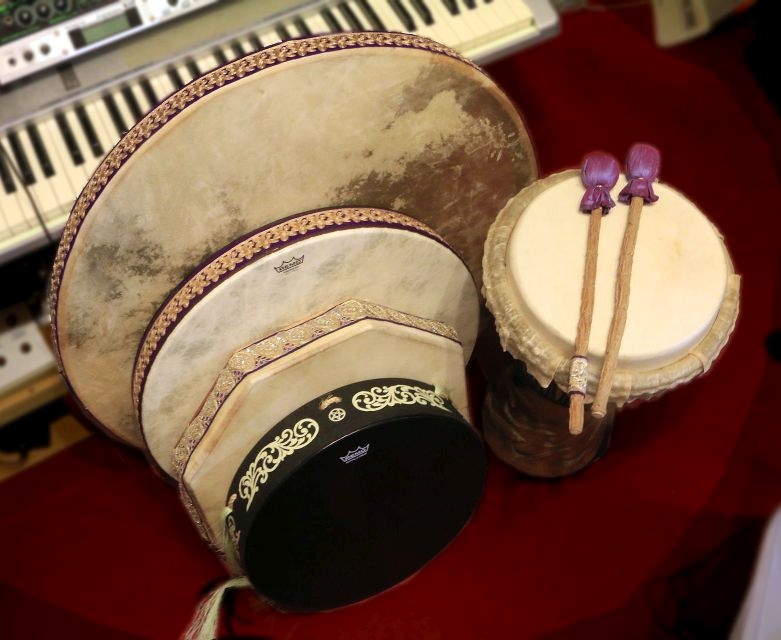


Boss RC30 Loop Station
During 2019 I decided to buy a looper pedal which I have found really useful when it comes to recording and layering initial ideas. With this pedal you have two recording tracks and can layer on top of each one as many times as you want. Some effects and drum beats also on the unit. It allows me to build up some really good sounding pieces quickly or to create ideas which I can then play around with later. The files on the unit are easily backed up on computer using USB. The only slight difficulty when recording loops is getting used to making sure that the pedal is pressed at just the right moment to get a perfect loop. I am now a big fan of loopers and will use them a lot from now on.
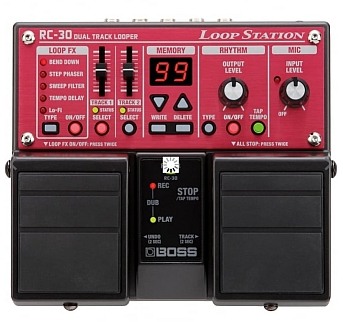
Roland 240-Rack Mixer
Due to delays in production of a custom mixer I purchased one of these in Spring 2017 for 200 pounds. I am able to use two channels panned Left and Right for each synth so it has plenty of inputs for all. The layout uses small dials so it is very compact. Initially I found it all worked but the overall sound quality not as I am used to hearing it so decided to try putting the final signals through the graphic equalizer to get back on familar sounding ground. This mixer is stored for the time being and in 2021 I was still using the originally home made mixer because the sound quality was perfect and i did not want to complicate it any more.
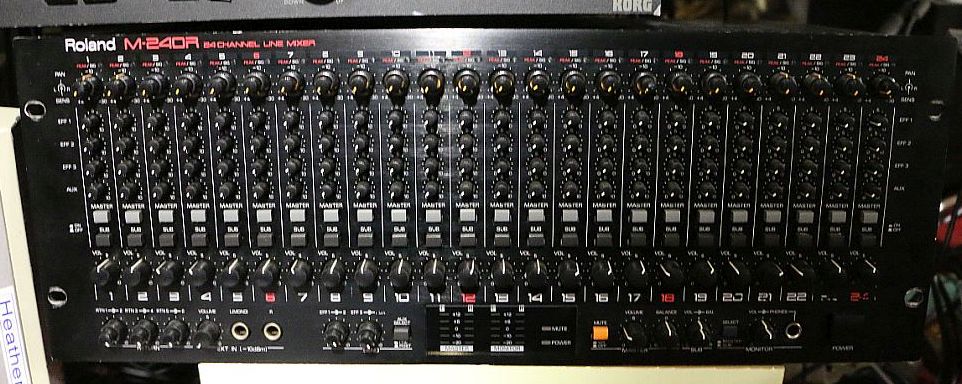
Arturia Beatstep Pro
Something I thought might be useful would be to have a simple sequencer which allows me to program simple patterns of notes that can be chained together and quickly edit the notes in the sequences. The beatstep pro does this well and you also use the onboard pads for playing instruments live as well as switching to drums. You can program two synths to play as well as a drum machine, and each one can play a sequence of up to 64 notes and you can have 16 chains for each one. You are however limited to one note for each beat so you can not layer notes and play chords but this is fine as my intentions were to create spontanious sequences and melodies for a certain style of music. You can do all this and more using computer software but I wanted something that was dead simple and hardware and portable too. Price new in 2016 was around 200 pounds. I decided to sell this one in 2019 mainly because my composing did not lend itself to the unit in the end. I used the money to purchase an Arturia Essential 61 controller and software.

Roland JP8000
Now that I knew the Roland JP8080 was my all time favorite I decided to buy the slightly older keyboard version so that I have the ability to use one as a keyboard if I wanted to go out and about playing live. Also in the summer months I often sit in the garden with a synth and either compose or create new sounds so the JP8000 is ideal. It is even very lightweight too.
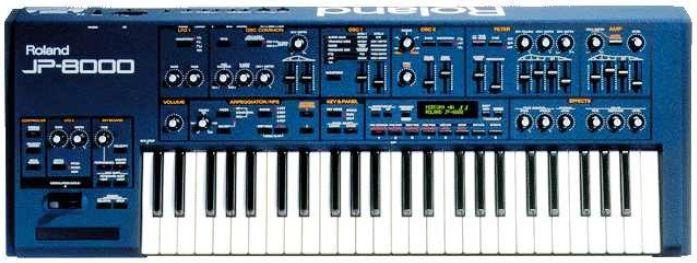
Cubase LE 5. Software
During 2016 I decided to purchase the light version of Cubase, a very sophisticated software package for recording music either as live digital recordings or as editable midi note data. Most musicians these days who work with synths and recording use a similar package, however I had never had a computer that could hook it up to my hardware. With this software I would be able to compose more complicated music for my hardware synths which is handy for those parts that my prehistoric QX5 sequencer would have done in the past but with much more ability to edit. I have yet to learn how to use this software and it will likely be slow to begin with. Another problem I have is that I do not have a MIDI interface on my PC which means the only way I can use this software is to run it through a USB lead into my master M-Audio keyboard and make changes to settings in order to use it. Also on top of that I can not record and play at the same time, I can only have one or the other. So in some ways I can not use it to its full potential until these issue are resolved. Note 2021 I have still not used it much. Also I got a free copy of Ableton Lite with some software I bought so I might eventually use that instead.
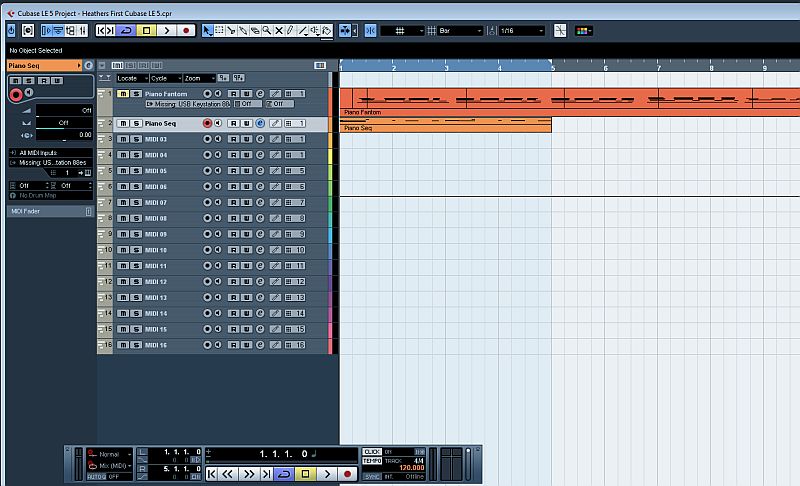
Novation Supernova II
The Supernova II I bought again to compliment to JP8080 and I had never tried the Novation range before. I wanted a synth that would produce more unique pad sounds and although I got it with this synth I was not too impressed with the very metallic sounding sounds I was getting to begin with. Though this synth is very capable of really good punchy synth and bass sounds I found the pads lacking warmth. The synth has plenty of room to save hundreds of your own sounds and because it works using dials and sliders and has three oscillators it has good potential. The factory presets I found were not so good, many of them awful for my own taste. I paid 850 pounds for it including a nice metal flight case. By 2020 it was really not getting used much so I decided to sell it
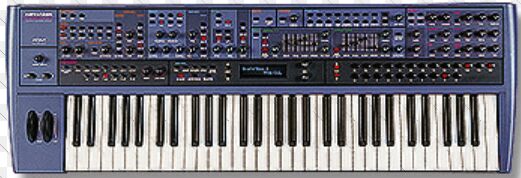
Korg Radias
In order to compliment the JP8080 and the Roland Fantom XR I decided to see what Korg were doing with some of their modern synths and this was the one I chose. Having the dials and sliders on the front panel is something I really liked on the JP8080 which is so much easier than going into menu's especially when playing live. The Radias is capable of some really good sounds and has a number of other features which allow you to use 4 sounds stacked together and assign each one to play either as drums, as an arpeggio, or as a sequence of notes. So you could assign a group of notes to play for each and every key if you wanted to which is actually very sophisticated. The pad sounds are nice with some crisp filters and I was particularly impressed with some of the tine piano and organ sounds which I would not usually like because they often sound too digital but on the Radias they have a clean warmth about them which is relaxing to hear. Price second hand was around 450 pounds.
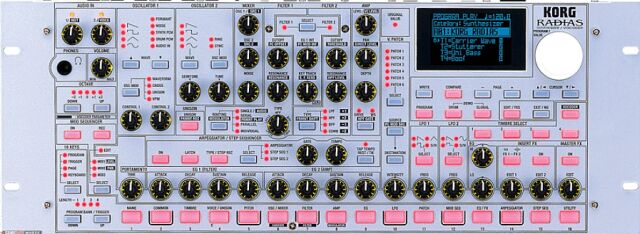
Roland Fantom XR rack-mount synthesizer
My next upgrade in about 2012 was to get something that was really modern and included piles of various pianos and orchestral instruments and this is what I chose. I was not disappointed with anything here because the unit I bought had been upgraded with several of the sound cards that included hundreds of piano's, organs, choirs, orchestras, flutes, violins, cellos, fiddles, bass guitars, acoustic and electric guitars, various synths and sound effects. Also dozens of drum kits and sounds from all around the globe including unique instruments. It even had memory for hundreds of your own sound samples too. The sounds that Roland used for these were all sampled from real live instruments so you get almost perfect reproduction. The likeness is so real most people would not be able to tell the difference. One of the things I always think is important when buying any synthesizer is that the sounds are of quality that they lead you in a way that inspires you to compose and teach you to play better. This is certainly an instrument which ticks those boxes for me. My only frustration with this unit is that being the rack version the menu's are well hidden which makes programming it difficult. If I ever upgraded I would go for the keyboard version of the same synthesizer. Price with all the sound cards and extra memory was 600 pounds.

Reason Software
Reason Software is a fairly self contained composing package which uses its own software synths and add on's that you purchase. You can either compose by drawing the notes you want to play on a screen or you can record through USB from a keyboard and it will put the notes you play into the screen so you can then edit them. Now I have really been getting on with this well for composing ideas really quickly and especially for drums. You are almost limitless in how many software devices and software effects you can stack up and use. So in a matter of minutes it is possible to build up some really complex software music. It was because of Reason that I sold all my drum machine hardware because this is so much easier and you can assign effects quickly to every drum pad. Most of the music I compose these days is a mixture of Reason Drums and some software sequences then layered with the main hardware synth sounds which I play manually over the top - all recorded into the homemade Studio software in order to make the final song.
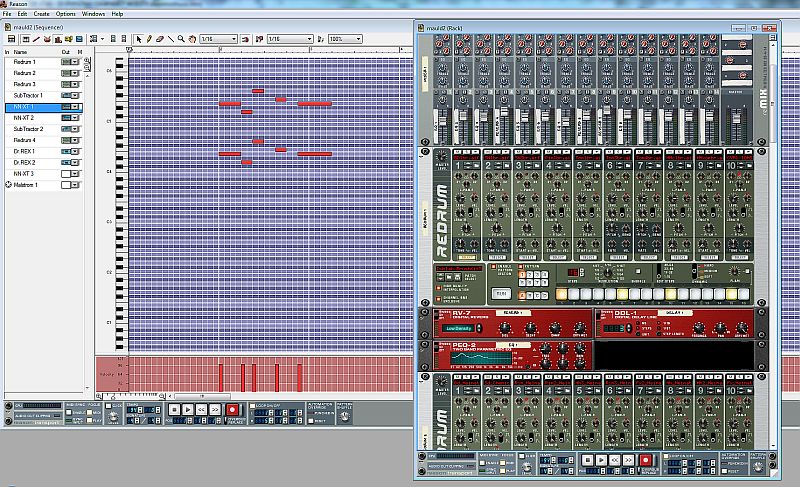
Korg M1R rack-mount synthesizer
A long time ago when I was using the Roland W-30 sampler I had a few sounds samples of the Korg M1 and always liked the unique voxy sounds it produced as well as some tingling string-pads. So since that synth was now a few years old I was able to pick up the rack version fairly cheaply at around 200 pounds and have enjoyed using it since. The only thing that I found disappointing was that the Korg M1 relies on a few dozen samples which you edit rather than producing the sounds from scratch using oscilators. Once you have bought a couple of those discs with hundreds of sound-sets on them and picked out the best you have pretty much heard all that the M1 can achieve. Having said that I have a full bank of really good sounds which I am very pleased with which are unique to the M1.

Roland JP8080 rack-mount synthesizer - I have TWO of these
Finally after decades of buying synthesizers I wanted to buy another modern one and something that would give me that sound I had always been after so I checked out all the synths there were on youtube and took a chance on this one because some of the string sounds in the demo sounded nice. I was spot on and this is my dream synth which combines the perfect sounds that tickle my ear drums, send tingles up and down my spine and allow me to chill out and meditate while playing. I have found nothing else that quite compares to this one since! You can get a really good range of string pads, arpeggiated sounds, nice twangy bass sounds as well as effects on one of these. Price was around 450 pounds. I bought another in June 2017 for 398 pounds because this is my most favorite unit and having two of these plus the JP8000 keyboard version gives me a lot of choice. Unfortunately the pixies got into the electronics on one of my JP's and now and then the sounds go crazy so I sometimes have problems using two together.
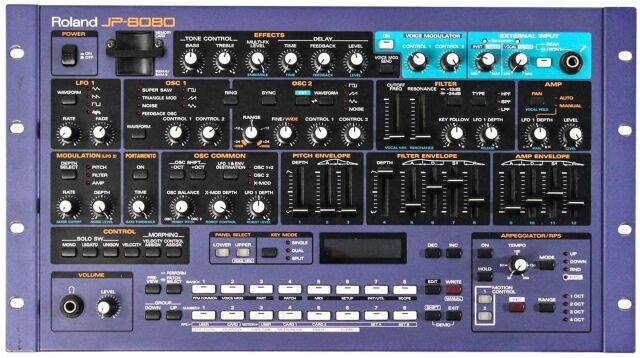
M-Audio Key Station 88 master Midi keyboard
I probably bought this around 2009 because I wanted a full 88 key midi controller. This was a good choice. At the time my fingers were a bit arthritic so I went for a semi-weighted touch which is half way between what you get on a real piano and on synthesizers. This unit does not actually produce any sounds, rather it sends midi messages of what you play down to all the other instruments. If you set it to say channel 1 and all the synthesizers are also set to channel 1 then what ever you play will be played on all the others which means you can layer up some really rich sounds using lots of instruments together.

Boss Dr Groove DR-202 Drum Machine
In the mid 2000's I decided it was time to experience a more modern drum machine as up until then I had been using the simple RX11 and any manual drum kits on the synths. I wanted something that would be easy to program as well as having more range of modern sounds. This was my choice and I used this until 2015 when I finally sold it. The drums had been good and the patterns enjoyable, however I had found programming it more difficult than I had hoped. Something which irritated me was that the preset drum patterns were often placed that they would come up and sound while you were trying to select a place and program a new pattern which was very offputting. In 2014 I met a local musician who was using Reason Software on the computer for music and I fell in love with the ease of use and almost limitless number of drum kits and effects provided. So now I do almost all my drum programming using Reason Software, as well as a little synth work as well.
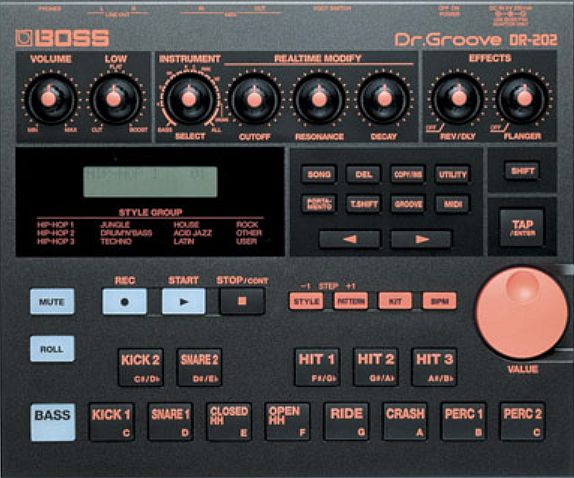
Zoom RFX-2000 Multi-Effects Unit
In the mid 2000's it was time to upgrade my effects unit to something more modern so this was my choice. Once again moving from a simple effects unit where you had to write down settings on paper to something with 100 custom patches was a breath of magic to my music. I was still using this in 2021.
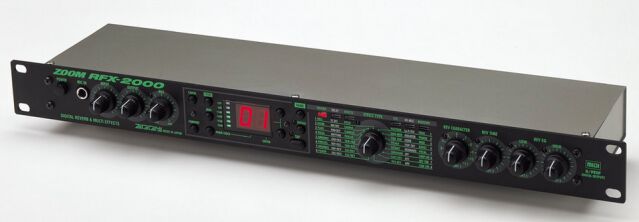
Micro-Sorex Synthesizer/Sampler
An in-house project we worked on in the 2000's where a synthesizer/sampler was built. Originally it was a simulation of the Korg Poly 800 but it became much more with a massive sampler on it. At the time it was very cutting edge.
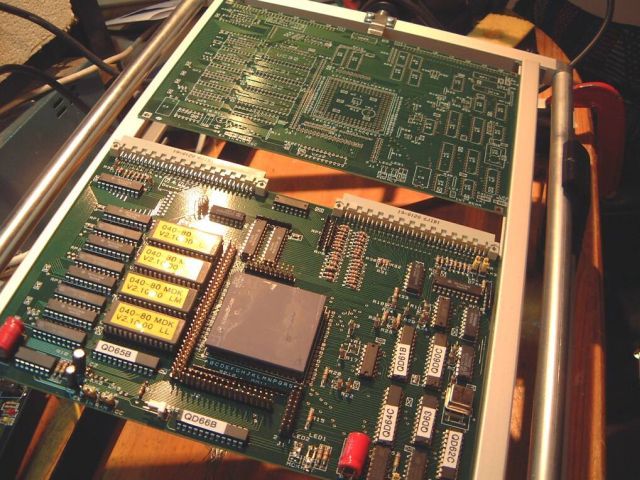
MM Complete Recording Studio
An in-house recording studio which was created specially for me so that I could record and edit my music in the form of sound clips. A lot of my music was done on this back in the 2000's up to present.
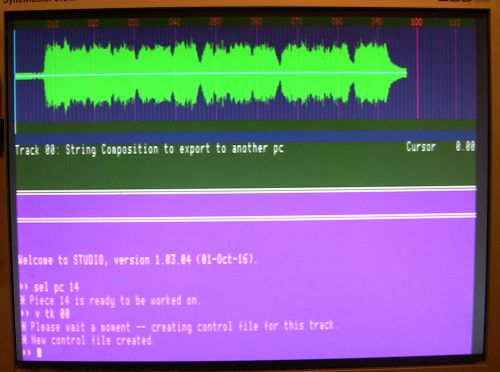
Heather's Fluffy Mixer Ver2
In the late 1990's we created this mixer in-house and it was used from then right up until 2024. It was a very simple mixer but worked nicely and did not take up much space.
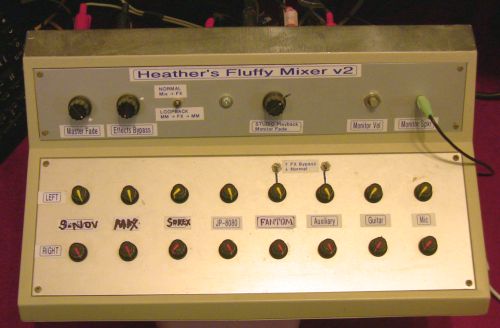
Fluffy Frequency Frobnicator
In the late 1990's we made this graphic equalizer in-house. It had around 20 sliders on it and was a learning project for me in soldering circuit boards.
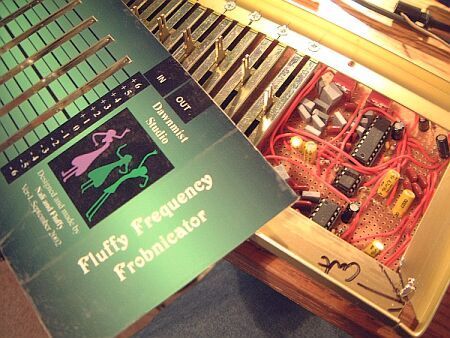
Roland W30 Workstation Synthesizer
When the Roland W30 came out for 1300 pounds I was already interested in the fairly new technology of sampling used in music. I cut corners by buying a silly toy casio sampler and realized I needed a professional one so this was it. On this keyboard you could record any sound you wanted to through a microphone and you could have an incredible 2 seconds recording or 4 at lower quality! Giggle. The W30 was also a Workstation keyboard which had its own onboard sequencer which meant you could record or program songs all in one go using the sounds. The main thing that was a pain was every time you wanted to do edits you had to keep loading in a system disc to get it to work. A nice feature was that you could layer sounds and with aftertouch bring the background sound to the front as you played. The factory piano sound I used lots for years. I sold the W30 during 2019.

Roland D10 Synthesizer
Wanting to expand my range of sounds this was my first ever experience of a Roland synth and multi-timbral composing. I bought this one new for about 1200 pounds when it first came out. I was very pleased with the more analogue sound however I did not realize this was not true analogue but was a mixture of simulated technology and sample-clips so once again my lack of knowledge let me down on the true kind of sounds I was after. However there was a really large range of sounds on the D10 and as well as being able to play the main performance patches you could set up eight individual sounds with their own midi channel as well as drum sounds so I was able to do a lot of detailed programming of many sounds all playing at once in conjunction with the sequencer I had. I used this synth a lot on my earlier albums: Life Beneath the Blue Sky and The Calling of Dawn. The additonal drums on this machine meant I was able to do a lot more than I could previously on the older drum machine. The D10 as well as the DX7 were used in a song I did as a joke (a tacky cheap sounding song) which was liked so much by someone it was used to open a radio show for more than 2 years in the 90's. The D10 was not a synth I ever did much creating of new sounds on because I personally found it difficult to edit, many of the menu's being lost within other menu's. I sold the D10 a few years ago.

Yamaha DX100 Synthesizer
At the time when this smaller portable synth was released I was doing music and drama on the streets so it was a lot easier to have something that could be worn like a guitar and used for basic bass and string sounds as well as special effects. It cost me about 350 pounds. A portable synth soon drained the large expensive batteries back then. The DX100 has some really good sounds on it as well as some really awful sounds but when I sold it a few years ago I got a good price because modern musicians wanted those good sounds.
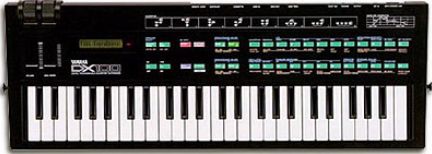
Yamaha DX7fdII Synthesizer
This was my first really expensive synth which just happened to be for sale on its first day of release when I went to the shop intending to buy something really top of the range. It cost me 1625 pounds. I chose the version with a floppy drive so sounds could be backed up on disc. This synth is really well made with a metal case and a really big led screen and many oscilators which allowed complex sounds. I used it for many years and sold it in 2020. In hindsight at the time of buying my knowledge of synth technology was really lacking and I did not understand the differences in sound creation between analogue and digital - years later I wish I had spent my money on a Roland analogue synth instead of the Yamaha digital. Still, I was fond of some of the sounds the DX7 produced and it featured lots in my earlier music.
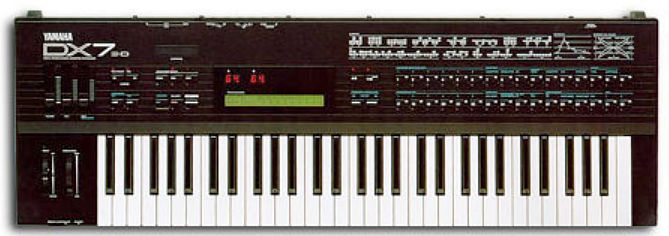
Fostex Digital Delay unit
My first ever effects unit which I bought second-hand. You created your effect which was either reverb, delay, chorus or flanger by altering the value of the dials. There was no way to store any information so when you needed to do another effect you had to either remember the settings or write down the values.

Yamaha QX5 Sequencer
My first sequencer and again a really basic device but it was an advance from recording on tape because it allowed music to be composed on the synth and drum machine using midi data first so mistakes and changes in the music could be edited and effects added before the final recording onto tape. Later on as I bought more synths it proved really useful when programming tracks for 16 differing sounds all playing at once. It was good for its time but having to edit individual notes on a long sequence meant you had to go through menu's then scroll through to find the right note which took ages. Even now in 2021 I still use this sequencer for recording realtime ideas and for doing really simple stuff so it is still very useful to have to hand.

Yamaha MT44 Multi-track tape recorder with MM30 Mixer
My first ideas and songs back in the 80's were recorded into a
tape-recorder but not too long after
getting a synth and drum machine it was necessary to move up to
multi-track recording. And this was
the most affordable unit around for amateur musicians back then. You
bought an ordinary good quality
tape and put a special reflective sticker on the back and put it in. The
sticker activated the ability to
record 4 mono tracks all on the one tape so you could either record two
lots of stereo or four mono and
to add more you would use a technique called ping-ponging which was to
mix down two or three of the tracks onto
one then free up the others for more recording. Each time you did that
you would loose a bit of quality in the sound though.
Occasionally using the tape back to front would allow some backwards
tracks. Any changes in the music were done manually
by stopping the tape recorder then taking the tape out and winding it
back by hand a fraction to try and get the tape in just
the right location for the next bit of music to begin spot on the beat
once the rec button was played - a very tedious procedure! The small
mixer that came with it was
really basic with an awful sounding reverb. All my really early albums
and ideas were recorded onto this and I got some fairly good results for
that time period!
When I went on a local radio show I had to get an ordinary tape
re-recorded onto a reel-to-reel because back then that was all radio
shows used.
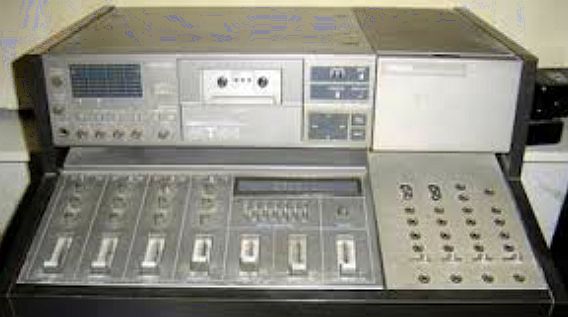
Yamaha RX11 Digital Drum Programmer
Yamaha RX11 Digital Drum Programmer
This rather simple drum machine was all I could afford at the time it first came out and I think was around 400 pounds.
It had really basic acoustic drum sounds on it and you could change the instruments on
a number of the pads so you had two or three snare sounds to choose from, wow, giggle. Still,
it was very easy to program and use in realtime and chain rhythms together. I first got a good appreciation for
types of rhythm on this one.
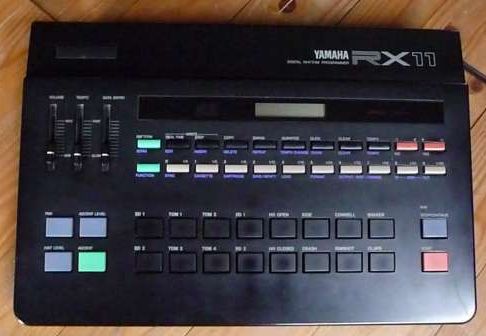
Korg POLY 800 Synthesizer
This was the first synthesizer I bought back in the 1980's. It was 600 pounds and while not a sophisticated instrument it was affordable to a beginner back then and easy to use producing some rather nice sounds with a feel that was fairly unique. It allowed me to be able to dabble around with creating and shaping sounds which was one of the reasons I was drawn to this kind of music in the first place. The Korg Poly 800 was rather desirable as a second-hand synth in 2013 when I wrote this and because I had already managed to recreate the sounds on some homemade equipment I finally decided to part with it. I do provide here copies of my data sheets which you may use. These sheets list the factory preset sounds that came with it as well as many new sounds that I created. I used to have larger copies of these files but lost them when my computer had problems so these files on the website here are all I have now, also one sheet is missing.
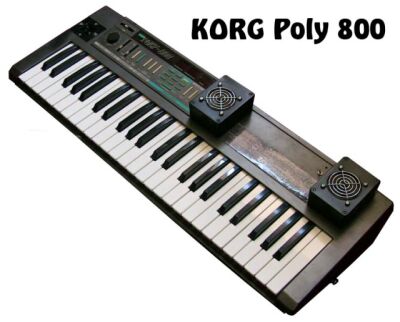
Studio Devona - Music
Head back to my music page...
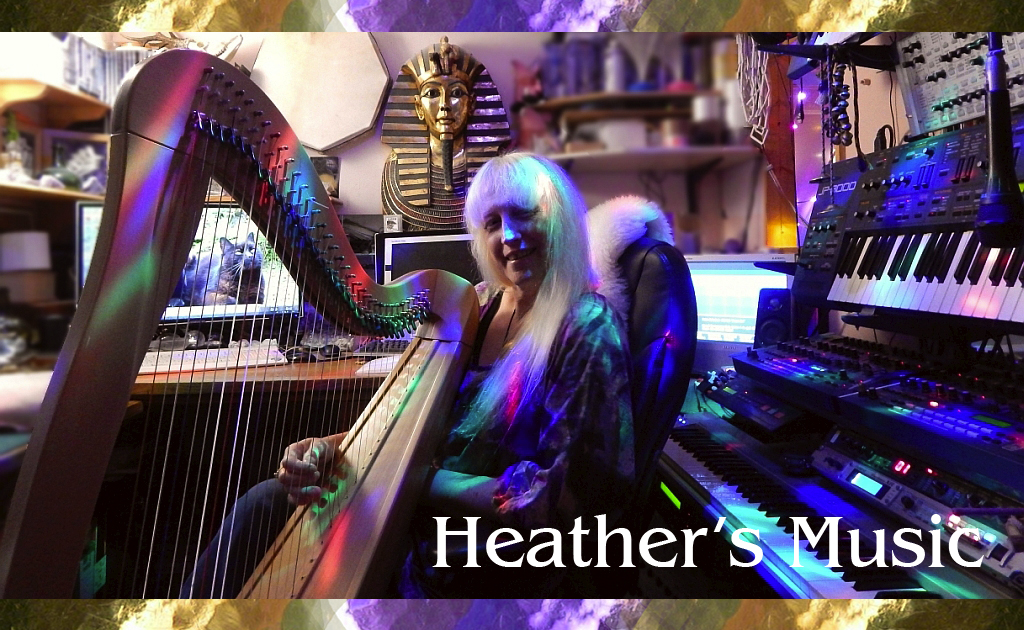
Discover the magic of Studio Devona!
Immerse yourself in traditional crafts, various creations and interests rooted in and inspired by the ancient landscape of Devonshire.
Get in Touch with
Devona
Lea-Croft Cottage, Cheriton Bishop, Devon. EX6 6JH